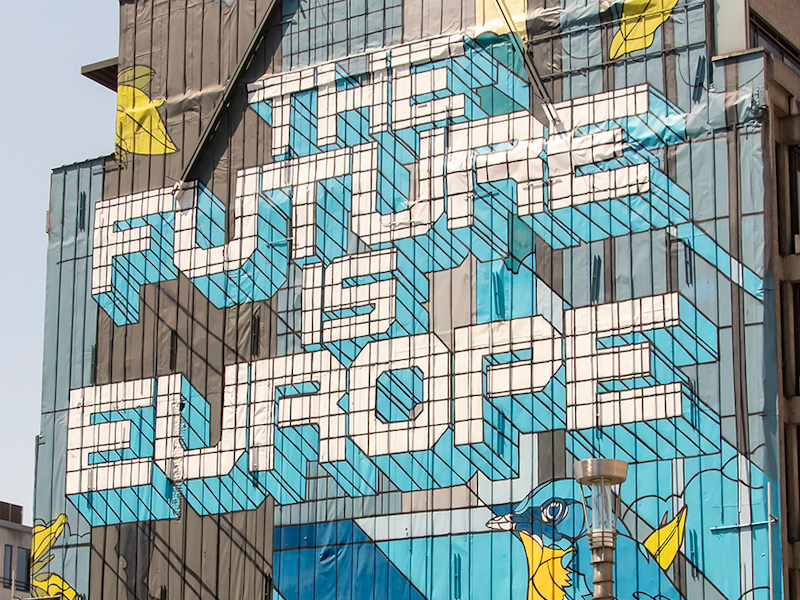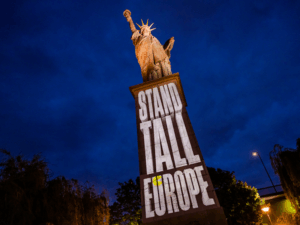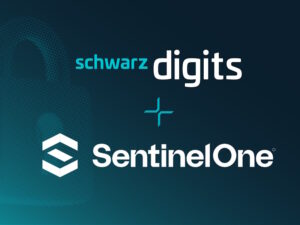- European cloud providers are increasingly preferred over US hyperscalers due to focus on digital resilience and cybersecurity.[^1][^2]
- Data sovereignty, hybrid‑cloud models, and EU‑backed regulations (e.g., DORA, NIS2, AI Act) are driving the shift.[^3][^8]
- Major initiatives such as EuroStack, the European Cloud Security Certification Scheme (EUCS), and the DNS4EU project aim to create a trusted “Made in Europe” cloud ecosystem.[^4][^5][^7]
- Investment programmes – from the EU’s €300 bn Digital Decade fund to national “Buy European” strategies – are supporting infrastructure, AI, and quantum technologies.[^1][^9]
- Challenges remain: regulatory alignment, scaling of sovereign cloud capacity, and competition with established US providers.[^6][^10]
Introduction
The European Union is positioning digital resilience as a strategic pillar of its future economy. With growing concerns over data sovereignty, cyber threats, and dependence on American hyperscalers, EU policymakers, industry leaders, and research institutes are championing a “Made in Europe” cloud model that combines strong security guarantees with flexible hybrid deployments.[^1][^2] This article examines the forces reshaping the European cloud landscape, the policy instruments fueling it, and the initiatives that could turn the continent’s ambition into a competitive reality.
Why European Cloud Providers Are Gaining Traction
European cloud operators such as Exoscale, Pexip, and emerging sovereign‑cloud projects are benefitting from a combination of market demand and regulatory pressure. A recent Exoscale post highlighted a “EuroCloud Pulse Check 2025” showing that:
“Hybrid and multi‑cloud models are becoming the norm, and sovereignty and resilience are now board‑level priorities.”[^5]
These sentiments echo the European Commission’s call for a resilient digital infrastructure in its 2023 Digital Summit speech, where the President emphasised the need for “clear rules of the game, rights and obligations” to protect citizens and businesses from cyber attacks.[^1]
Data Sovereignty and Hybrid Cloud Models
Data sovereignty—keeping data under EU jurisdiction—is central to the EU’s digital strategy. The Digital Services Act and Digital Markets Act already enforce transparency and safety for online platforms, while the forthcoming European Cloud Security Certification Scheme (EUCS) seeks to certify cloud services that meet EU‑approved security standards, thereby limiting reliance on non‑EU providers.[^4][^7]
Hybrid cloud solutions, which blend on‑premises resources with public cloud capacity, allow organisations to retain sensitive workloads locally while scaling on demand. The German “digital sovereignty” blueprint stresses a “Buy European” approach, proposing a €10 bn European Technology Fund to accelerate such hybrid deployments.[^2]
Policy Momentum Behind Digital Resilience
Several EU legislative packages reinforce the resilience agenda:
- DORA (Digital Operational Resilience Act) obliges financial entities and critical infrastructure operators to adopt robust risk‑management and incident‑response processes.[^8]
- NIS2 Directive expands the scope of cybersecurity obligations to a wider range of essential and important entities, mandating incident reporting and supply‑chain security.[^3]
- AI Act introduces a risk‑based regime for artificial‑intelligence systems, ensuring that AI deployed in critical services adheres to safety and fundamental‑rights standards.[^3]
Collectively, these measures create a regulatory environment where European cloud providers can differentiate themselves through compliance and trust.
Key Initiatives and Investments
Beyond legislation, concrete programmes are shaping the market:
- EuroStack: A Bertelsmann Stiftung report outlines a €300 bn, ten‑year plan to build a pan‑European digital infrastructure, including sovereign “super clouds,” data spaces, and quantum computing facilities.[^4]
- DNS4EU: The European Cyber Security Organisation (ECSO) is coordinating a strategic overview of a secure, privacy‑compliant DNS infrastructure to reduce dependency on non‑EU providers.[^7]
- Fraunhofer mioty Alliance: Demonstrates a European‑born low‑power wide‑area network (LPWAN) that can serve IoT workloads securely, reinforcing the “Made in Europe” narrative for edge connectivity.[^6]
- OpenNebula & CISPE Working Group: Initiatives aim to define European sovereign cloud solutions and promote interoperability across member‑state clouds.[^9]
- Private‑sector investment: Companies like Pexip have announced multi‑billion‑euro plans to expand European‑based video‑collaboration and secure‑by‑design services, aligning with the EU’s push for digital sovereignty.[^2][^10]
Challenges and the Road Ahead
Despite momentum, several hurdles remain:
- Regulatory alignment: Divergent national implementations of NIS2 and the AI Act could create fragmented compliance requirements.[^1][^3]
- Scale of infrastructure: Building sovereign data centres and super‑computing resources to match US hyperscalers’ capacity demands significant capital and talent pipelines.[^9]
- Market adoption: Enterprises may still favour established US providers for global reach, unless EU clouds can demonstrate comparable performance and seamless hybrid integration.[^5][^10]
Addressing these issues will require coordinated public‑private effort, continued funding, and a focus on open standards to ensure interoperability across the European cloud ecosystem.
Conclusion
“Digital resilience made in Europe” is moving from rhetoric to concrete action. A blend of ambitious regulation, targeted funding, and industry collaboration is laying the groundwork for a sovereign, secure cloud landscape. If the EU can harmonise its policies, scale infrastructure, and nurture innovation, European cloud providers may not only reduce reliance on US hyperscalers but also set a global benchmark for trustworthy digital services.
References
[^1]: European Commission (2023-09-04). “Building European Resilience in the Digital Age“. Retrieved 24 Oct 2025.
[^2]: Pexip (2025-07-29). “Germany’s vision for Europe’s digital sovereignty and cyber resilience“. Retrieved 24 Oct 2025.
[^3]: European Commission (2025-10-24). “European approach to artificial intelligence“. Retrieved 24 Oct 2025.
[^4]: Bertelsmann Stiftung (2025-02-13). “EuroStack – A European Alternative for Digital Sovereignty“. Retrieved 24 Oct 2025.
[^5]: Exoscale (2025-10-17). “Press play on sovereignty: Europe’s cloud is finding its own voice“. Retrieved 24 Oct 2025.
[^6]: Fraunhofer Institute (2025-12-03). “mioty: Made in Europe, for Europe – Enabling a Resilient European IoT Ecosystem“. Retrieved 24 Oct 2025.
[^7]: ECSO (2025-10-24). “Securing Europe’s Digital Future: A Strategic Overview of DNS4EU“. Retrieved 24 Oct 2025.
[^8]: Networking4all (2025-10-24). “What is Digital Operational Resilience Act (DORA)?“. Retrieved 24 Oct 2025.
[^9]: Kron4 (2025-10-25). “OpenNebula Systems Joins CISPE’s Working Group Defining European Sovereign Cloud Solutions“. Retrieved 24 Oct 2025.
[^10]: Sysdig (2025-10-24). “Five Key Achievements in EU Digital Policy: An Actionable Overview for Corporate Leaders“. Retrieved 24 Oct 2025.



